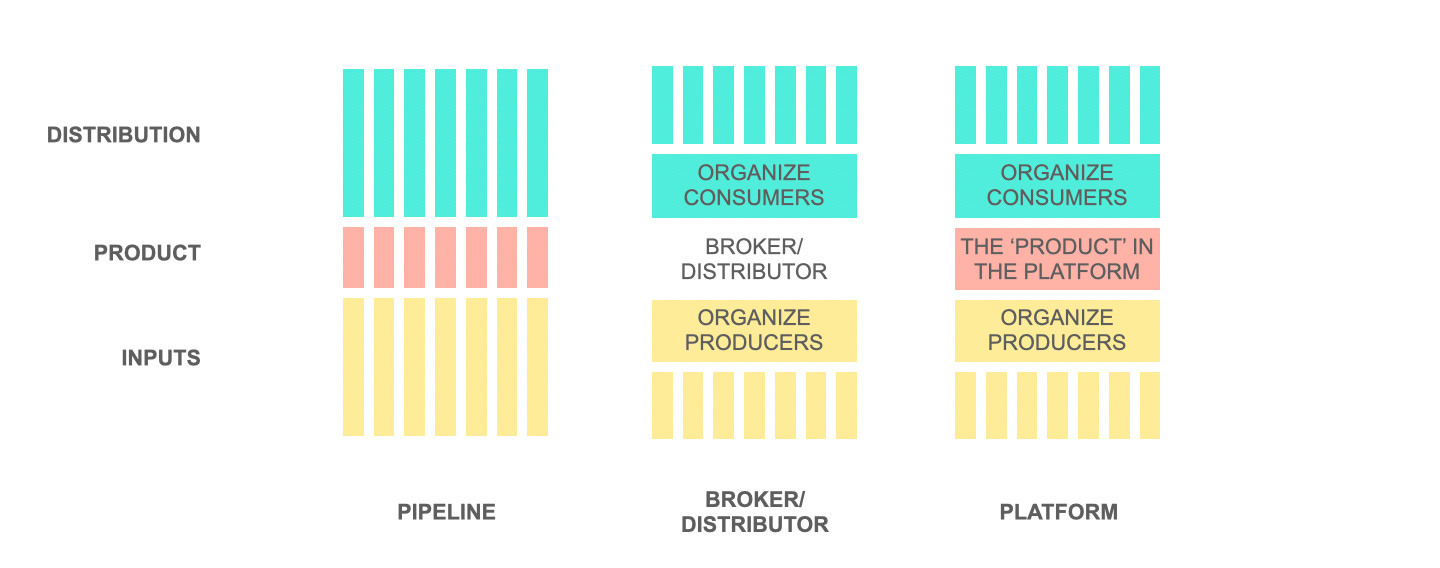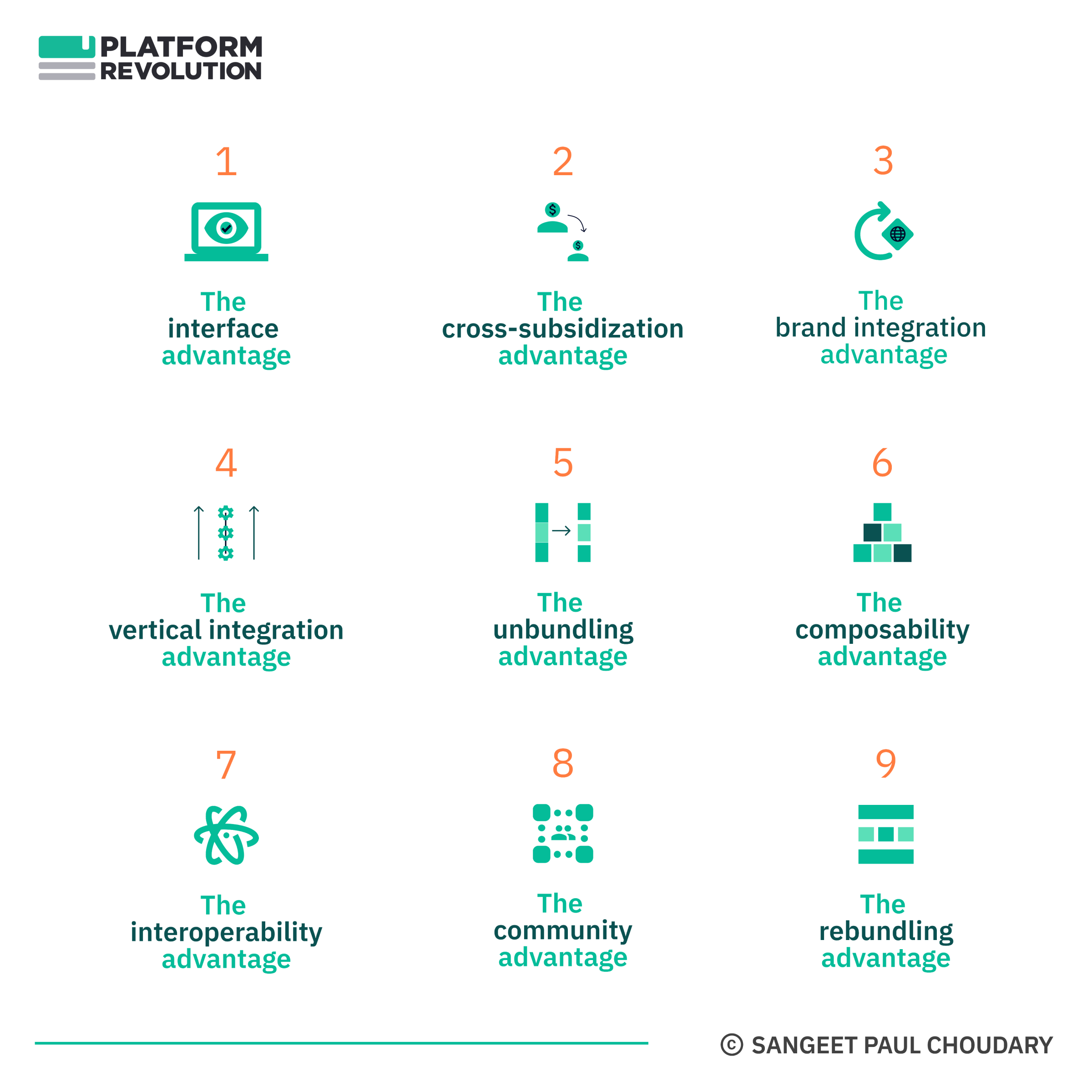Strategy
The rise of full-stack solutions
In the course of my work advising business leaders on the ongoing platform revolution, I enjoy the privilege of getting a ringside view of key shifts in business as they start showing up across industries. One of those shifts that I’ve begun to observe over the course of my recent discussions is the rise in importance of, what I’ve begun to call, the full-stack solution.
THE FULL-STACK SOLUTION
The term full-stack is often misused and misrepresented but I’m using this term in the specific context of the Platform Stack that I lay out in my book Platform Scale and in the blog post here.
Traditionally, pipe businesses built products and services and sold them to customers. Increasingly, businesses are starting to think like platforms even though they may not claim to be building platforms and may not even look like technology-enabled businesses.
The Full-Stack Solution creates an end-to-end solution for the user across all layers of the platform stack. There are several characteristics that these solutions have.
- The full-stack solution consists of multiple products and services.
- This is not merely a portfolio of products, they are also integrated with each other at the data layer so that the consumer experience is preserved across the different products and services.
- The products/services are rarely all owned by a single company. In most cases, an ecosystem of partner companies come together to power the full-stack solution.
- The composition of the full-stack solution is determined by user need, not by product/service availability.
- Value to the consumer is not delivered through usage of the product or service alone. In addition to product/service value (infrastructure layer), value may also be offered on the basis of data captured (personalization or analytics) and through a community of use (network layer) that builds up around the products/services.
Traditional pharmacies sell medicines. They are in the business of selling medicines, not in the business of improving patient health. Increasingly, pharmacies are recognizing an opportunity for creating a full-stack solution to address the problem of patient health. Medicines are only one part of the solution. Pharmacies are using patient purchase data to create a detailed profile of the patient and attract other wellness providers to co-create a full-stack health solution for the patient based on their unique data profile.
Consumer electronics manufacturers have been moving in this direction by bundling connected services that enhance the usage of their physical products. In a similar vein, FMCG companies have been creating interactive services to complement product usage. For example, a company selling skincare products may launch a suite of skincare management (digital) services and create communities of usage around the product, while also leveraging the usage data to personalize skincare recommendations for the consumer.
Scale is achieved by making repeatable processes more efficient (faster/cheaper) and effective (accurate).
Feel Free to Share
Download
Our Insights Pack!
- Get more insights into how companies apply platform strategies
- Get early access to implementation criteria
- Get the latest on macro trends and practical frameworks
THINKING FULL-STACK
The fundamental mindset shift while providing a full-stack solution is to stop thinking in terms of the products and services you own today, or even in terms of the ones that you can create tomorrow, and start thinking in terms of the full stack of products and services required to guarantee user outcomes. Inevitably, this requires an ecosystem of participants to come together. It is unlikely for one company to own all the products and services required to solve a user need comprehensively and guarantee the final outcome.
The creation of full-stack solutions will also be heavily dependant on data-driven feedback from consumers. As consumers choose different products and services and use them in combination, the solution provider will better understand the unique combinations of products and services that work best and the gaps that exist in provisioning a comprehensive solution.
Finally, while co-creatiing a comprehensive solution has its benefits, it lends itself to additional complexities of governance when multiple partners come together to power an overall solution. Some partners may create more value while others may explicitly capture more value. The balance of incentives by the central coordinating firm will determine how successful such solutions end up being.
State of the Platform Revolution
The State of the Platform Revolution report covers the key themes in the platform economy in the aftermath of the Covid-19 pandemic.
This annual report, based on Sangeet’s international best-selling book Platform Revolution, highlights the key themes shaping the future of value creation and power structures in the platform economy.
Themes covered in this report have been presented at multiple Fortune 500 board meetings, C-level conclaves, international summits, and policy roundtables.
Subscribe to Our Newsletter













